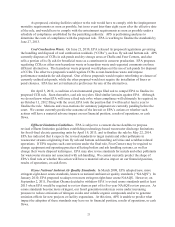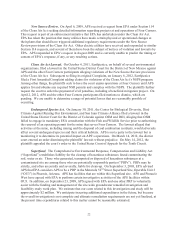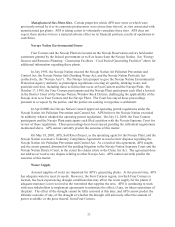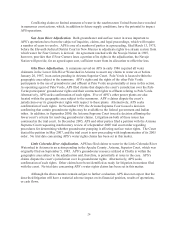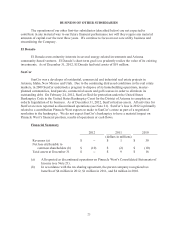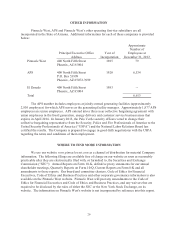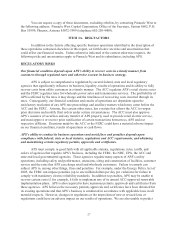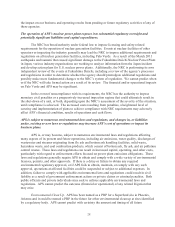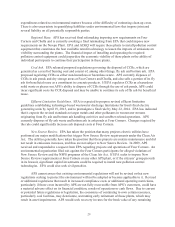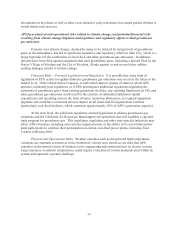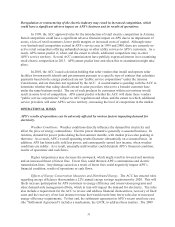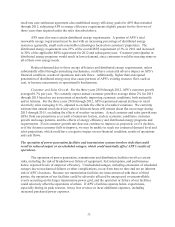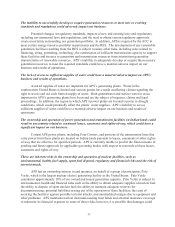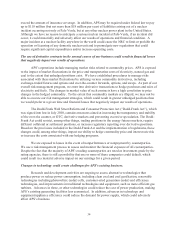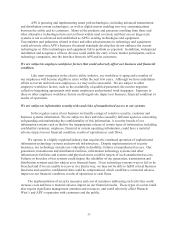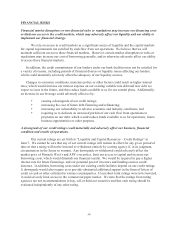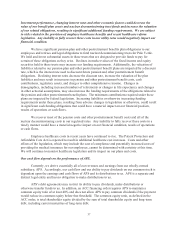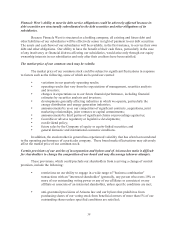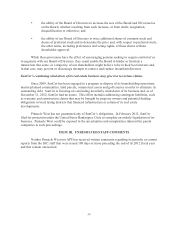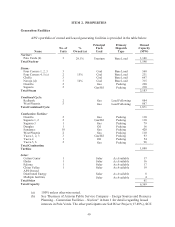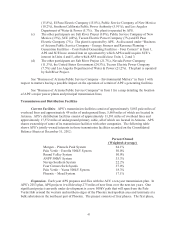APS 2012 Annual Report Download - page 55
Download and view the complete annual report
Please find page 55 of the 2012 APS annual report below. You can navigate through the pages in the report by either clicking on the pages listed below, or by using the keyword search tool below to find specific information within the annual report.
31
Deregulation or restructuring of the electric industry may result in increased competition, which
could have a significant adverse impact on APS’s business and its results of operations.
In 1999, the ACC approved rules for the introduction of retail electric competition in Arizona.
Retail competition could have a significant adverse financial impact on APS due to an impairment of
assets, a loss of retail customers, lower profit margins or increased costs of capital. Although some
very limited retail competition existed in APS’s service area in 1999 and 2000, there are currently no
active retail competitors offering unbundled energy or other utility services to APS’s customers. As a
result, APS cannot predict if, when, and the extent to which, additional competitors may re-enter
APS’s service territory. Several ACC commissioners have publicly expressed interest in re-examining
retail electric competition in 2013. APS cannot predict how and when this re-examination might take
place.
In 2010, the ACC issued a decision holding that solar vendors that install and operate solar
facilities for non-profit schools and governments pursuant to a specific type of contract that calculates
payments based on the energy produced are not “public service corporations” under the Arizona
Constitution, and are therefore not regulated by the ACC. A second matter is pending with the ACC to
determine whether that ruling should extend to solar providers who serve a broader customer base
under the same business model. The use of such products by customers within our territory would
result in some level of competition. APS cannot predict whether the ACC will deem these vendors
“public service corporations” subject to ACC regulation and when, and the extent to which, additional
service providers will enter APS’s service territory, increasing the level of competition in the market.
OPERATIONAL RISKS
APS’s results of operations can be adversely affected by various factors impacting demand for
electricity.
Weather Conditions. Weather conditions directly influence the demand for electricity and
affect the price of energy commodities. Electric power demand is generally a seasonal business. In
Arizona, demand for power peaks during the hot summer months, with market prices also peaking at
that time. As a result, APS’s overall operating results fluctuate substantially on a seasonal basis. In
addition, APS has historically sold less power, and consequently earned less income, when weather
conditions are milder. As a result, unusually mild weather could diminish APS’s financial condition,
results of operations and cash flows.
Higher temperatures may decrease the snowpack, which might result in lowered soil moisture
and an increased threat of forest fires. Forest fires could threaten APS’s communities and electric
transmission lines. Any damage caused as a result of forest fires could negatively impact APS’s
financial condition, results of operations or cash flows.
Effects of Energy Conservation Measures and Distributed Energy. The ACC has enacted rules
regarding energy efficiency that mandate a 22% annual energy savings requirement by 2020. This will
likely increase participation by APS customers in energy efficiency and conservation programs and
other demand-side management efforts, which in turn will impact the demand for electricity. The rules
also include a requirement for the ACC to review and address financial disincentives, recovery of fixed
costs and the recovery of net lost income/revenue that would result from lower sales due to increased
energy efficiency requirements. To that end, the settlement agreement in APS’s recent retail rate case
(the “Settlement Agreement”) includes a mechanism, the LFCR, to address these matters. The 2009


